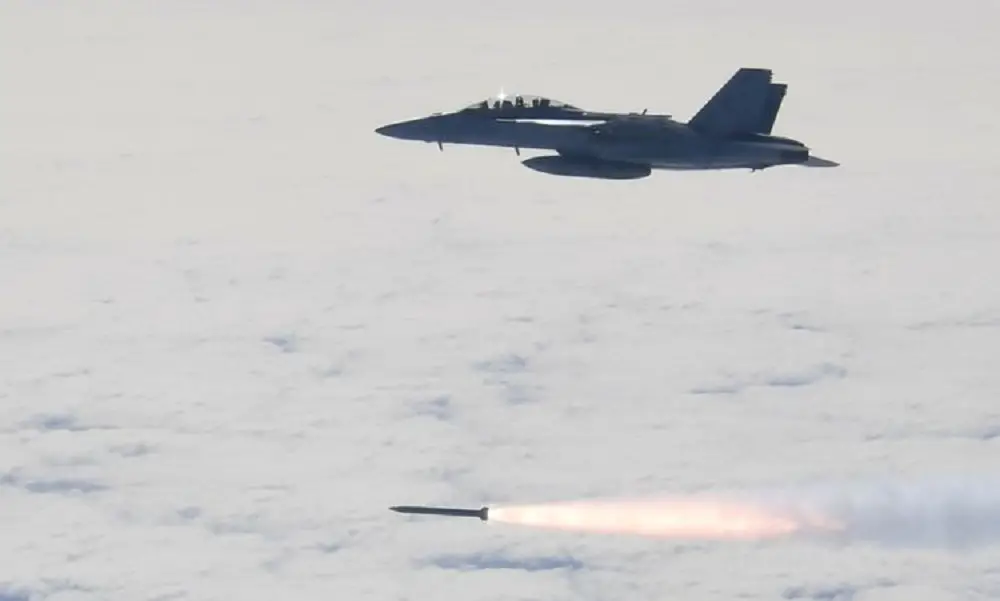The U.S. State Department has made a determination approving a possible Foreign Military Sale to the Government of Poland of Advanced Anti-Radiation Guided Missiles – Extended Range (AARGM-ER) and related elements of logistics and program support for an estimated cost of $1.275 billion. The Government of Poland has requested to buy three hundred sixty (360) Advanced Anti-Radiation Guided Missile-Extended Range (AARGM-ER) All Up Rounds (AUR); eight (8) AGM-88G AARGM-ER Guidance Sections (spares); and eight (8) AGM-88G AARGM-ER Control Sections (spares). Also included are Dummy Air Training Missiles (DATM); missile containers, software; training; support equipment; spare and repair parts; embedded Global Positioning System receiver, M-Code; publications and technical documentation; transportation, U.S. Government and contractor engineering; technical and logistical support services; and other related elements of logistics and program support.
This proposed sale will support the foreign policy goals and national security objectives of the United States by improving the security of a NATO Ally that is a force for political stability and economic progress in Europe. The proposed sale will improve Poland’s capability to meet current and future threats by strengthening its self-defense capabilities to suppress and destroy land- or sea-based radar emitters associated with enemy air defenses. This capability denies the adversary the use of its air defense systems, thereby improving the survivability of Poland’s tactical aircraft. Poland will have no difficulty absorbing this equipment into its armed forces. The proposed sale of this equipment and support will not alter the basic military balance in the region. The principal contractor will be Northrop Grumman Systems located in Falls Church, VA.

The AGM-88 HARM (High-speed Anti-Radiation Missile) is a tactical, air-to-surface anti-radiation missile designed to home in on electronic transmissions coming from surface-to-air radar systems. In September 2016, Orbital ATK unveiled its AARGM-ER, which incorporates a redesigned control section and 11.5 in diameter (290 mm) rocket motor for twice the range and internal carriage on the Lockheed Martin F-35A and F-35C Lightning II with integration on P-8 Poseidon, F-16 Fighting Falcon and Eurofighter Typhoon planned afterwards; internal carriage on the F-35B is not possible due to internal space limitations. The new missile, designated AGM-88G, utilizes the AARGM’s warhead and guidance systems in a new airframe that replaces the mid-body wings with aerodynamic strakes along the sides with control surfaces relocated to low-drag tail surfaces and a more powerful propulsion system for greater speed and double the range of its predecessor.
The Navy’s FY 2016 budget included funding for an AGM-88G AARGM-Extended Range (AARGM-ER) that uses the existing guidance system and warhead of the AGM-88E with a solid integrated rocket-ramjet to double the range. It weighs 1,030 lb (467 kg) and is slightly shorter than earlier variants at 160 in (4.06 m) in length. The AARGM-ER incorporates hardware and software modifications to improve AGM-88E AARGM capabilities to include extended range, survivability and effectiveness against future threats. AARGM-ER development uses digital modeling and integrated advanced AARGM sensors and electronics in a new high-performance air vehicle with upgraded propulsion and an optimized warhead. The new missile will provide the Navy, Air Force and Marine Corps with a vital counter-air-defense capability that can engage advanced and long-range threats while pilots remain outside of lethal engagement ranges.












